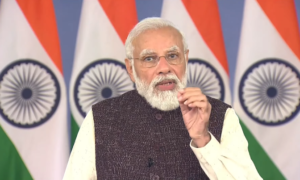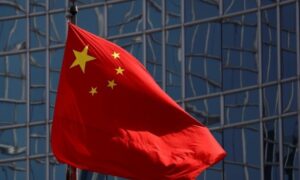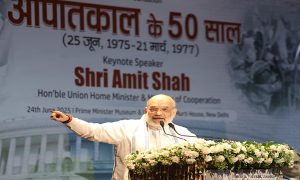Coronavirus cases in China could have been “dramatically reduced” if the government had locked down the first outbreak epicentre Wuhan, restricted inter-provincial travel and banned public gatherings one-to-three weeks before it did on January 23, a new international research paper has said.
Published in the science journal Nature, this week, the researchers said – in a rare argument based on a mathematical model — that earlier implementation of “non-pharmaceutical interventions” (NPIs) could have also reduced the “geographical range of the outbreak”.
Conversely, a delay – later than January 23 — could have made the outbreak far worse, they said.
If the lockdowns and closing down of public places were not carried out by the time they were done, infections could have increased 67 times to 7.7 million in the country by February.
Beijing has so far aggressively argued that it was the unprecedented lockdown of Wuhan — where the coronavirus first emerged late last year – and then of the province Hubei not only curbed the Covid-19 spread in China but also gave the rest of the world a wider window of time to prepare for the eventual pandemic.
The new paper compiled by researchers from University of Southampton in th UK, Fudan University and Wuhan Centre for Disease Control and Prevention in China and the US’s Harvard Medical School and Johns Hopkins Bloomberg School of Public Health indicates the scenario if the those measures were taken earlier.
The researchers took February 29 as the base date when they estimated that the number of Covid-19 cases in China were 114325 – the official number was close to 80000.
From January 23, three major groups of NPIs were implemented to contain the spread of the outbreak in China: First, inter-city travel restrictions were put in place; second was the early identification and isolation of cases and lastly, contact restrictions and social distancing measures, together with personal preventive actions, such as hand washing, were implemented to reduce the community-level exposure risk, the researchers said.
If these interventions in China could have been conducted one week, two weeks, or three weeks earlier, cases could have been dramatically reduced by 66 percent, 86 percent or 95 percent respectively, they wrote.
“The geographical range of affected areas would also shrink from 308 cities to 192, 130, and 61 cities, respectively”.
“Earlier implementation of NPIs could have significantly reduced the magnitude and geographical range of the outbreak, but equally, a delayed response would have led to a larger outbreak,” the researchers said.
Lai Shengjie, one of the researchers involved in creating the model, said it was difficult for China to implement the NPIs before as not much was known about the pathogen initially.
“This is just a theoretical estimate from model, but without considering the impact of actual socioeconomic factors and the capacity of identifying this novel virus at the early stage of the outbreak. Considering that this is totally a new pathogen, it did need time to collect evidence and identify viruses, and isolate viruses in the early stage of an outbreak,” Lai, a research fellow on
geography and environmental science at the University of Southampton, told HT over email.
“I would like to say that China’s actions to lockdown a 11-million population city within two weeks after isolating the virus was very commendable. Because at that time, the necessity of such measures was still suspect, because the relevant evidence is still very limited, but now similar interventions have been widely adopted,” Lai said.
The study indicated that early detection and isolation did more to curb the contagion than the other two NPIs, but all three combined interventions achieved the strongest and most rapid effects.
The researchers said NPIs should be continued as China gradually opens up.
“Given travel and work resuming in China, the country should consider at least the partial continuation of NPIs to ensure that the Covid-19 outbreak is sustainably controlled for the first wave of this outbreak.”
“For example, early case identification and isolation should be maintained, which may also help to prevent and delay the arrival of a second wave, considering the increasing numbers of cases imported from other countries the presence of asymptomatic or subclinical infections found in China,” the research said.
On the ongoing lockdown in India, the researcher Lai said the intensity depends on the combined interventions.
“I don’t have the details of interventions in India, but I think the effects depend on the intensity and duration of combined interventions implemented in each country, not just the travel restriction and social distancing measures,” Lai said




























 WhatsApp us
WhatsApp us